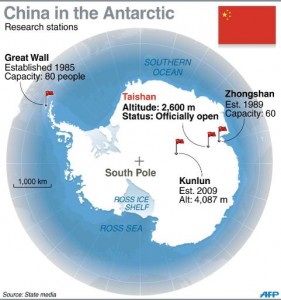 It is time to put the Antarctic back on the American radar. An open Antarctic risks sparking a wide-ranging war–I mean, if you liked the War for the Falklands, just wait as our planet’s southernmost continent opens to resource extraction, settlement or…worse.
It is time to put the Antarctic back on the American radar. An open Antarctic risks sparking a wide-ranging war–I mean, if you liked the War for the Falklands, just wait as our planet’s southernmost continent opens to resource extraction, settlement or…worse.
An open Antarctic is coming. And though it might be hard to build a sense of urgency for a problem that is a bit more than 25 years out (and likely tied to the fickle pace of global warming, no less…), the 2048 review of the Antarctic Treaty and the real geopolitical risks posed by an over-hasty opening the Antarctic should sober everybody up really, really quickly.
If there’s a place where a war or two is gonna start, this is it.
Am I alarmist? No. Look, if developing countries are already on the verge of fighting over a few abandoned rocks in a spoiled and overfished sea, imagine what is going to happen in about thirty years from now, when an increasingly resource-starved international community fully realizes that an entire continent–an entire unpopulated continent–is “up for grabs”.
It will be a modern-day Gold Rush for space, resources and national pride.
If our current fumbling on Arctic Policy is any guide, I fear America will avoid taking even the most modest of proactive steps, frittering away a strong position it earned by leading the wave of Antarctic exploration back in 1957-8. Only when another country relieves the U.S. of regional leadership will the resulting crisis compel America to take some sort of action.
If we assume that Antarctica is the biggest geopolitical prize on the planet, passivity is unwise. Surely an opening continent is worth mulling over. After all, these things only open once.
What is the strategy?
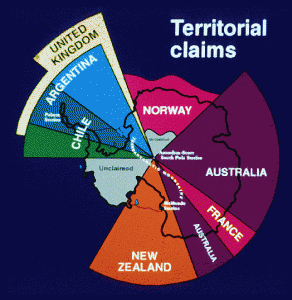 The strategic question is fundamental: Is the United States going to play in the Antarctic?
The strategic question is fundamental: Is the United States going to play in the Antarctic?
There are good arguments both for and against: Since the International Geophysical Year (1957-8) America has been the primary driver of sustainable, measured Antarctic policy and certainly, with the longest-established permanent structure and largest base network, has a claim on the Continent as compelling as any other country out there.
Or we decide the Antarctic is not in our Area of Interest, then let’s make our peace (and possibly profit) as the international mechanism to manage Antarctica grows into powerless disfunction, and China–in the worst case scenario–relentlessly pushes other rival states/Claimants aside.
But if we do feel that Antarctica is a significant U.S. interest–and I think it should be–then the time for action is now.
I offer several suggestions:
Raise the Region’s Profile:
 Use the “Bully Pulpit” to express U.S. interest in the region.
Use the “Bully Pulpit” to express U.S. interest in the region.
It would be wise to move fast–before China starts calling the Antarctic a “Core Issue”–or whatever dog-whistle term they currently use to justify their latest land-grab,–let’s consider raising the region’s profile by sending President Obama to visit the U.S. McMurdo Station and/or Amudsen-Scott South Pole Station (in a quick divert from his April Asia trip?), and have the President simply announce that America has long had–and will long maintain–an active interest in the orderly management of a demilitarized Antarctica.
An expression of active, high-level U.S. interest now can do a lot to defuse feverish dreams of the Antarctic frontier serving as China’s version of Manifest Destiny.
(And, if we want to be tactical, with Australia making rumblings about re-evaluating their Antarctic Strategy, an expression of interest by America might prove to be particularly timely.)
Designate a Responsible Bureaucratic Lead:
 The Antarctic–like so many other ignored “problem-from-hell” issues–slides neatly into an enormous number of America’s bureaucratic blind spots.
The Antarctic–like so many other ignored “problem-from-hell” issues–slides neatly into an enormous number of America’s bureaucratic blind spots.
Antarctica isn’t just off the radar–it’s totally off the bureaucratic map. To give you an idea, in the US, the continent is not even really represented on the standard Mercator wall map–it’s just some vacant space at the bottom, obscured by map keys, scales and so forth. With the Mars Rovers, the American public probably knows more about the geography of Mars than the Antarctic.
Beyond cute marching Penguins and the pirate-like antics of the Sea Shepard Conservation Society, the region just isn’t on the forefront of America’s consciousness or imagination.
That lack of public awareness is exacerbated by the administrative peculiarities of the region. As a place that borders a number of regional commands or diplomatic jurisdictions, an unpopulated Antarctica defies easy administration/consideration/study/coordination by the human-terrain-COINfolks and the map-and-AOR-bound State and Defense Departments.
Making matters worse, the US just isn’t very good at focusing on the geopolitics of regions that straddle multiple AORs; the State Department buries Antarctica somewhere in the bureaucratic wasteland of Fisheries, Marine Conservation, Ocean and Polar Affairs. DOD engagement is largely logistical, via Operation Deep Freeze and other support to the National Science Foundation.
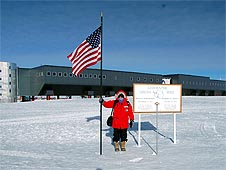 It’s a fascinating conundrum. As a government, we dismiss Antarctica as a viable administrative region due to low importance, yet the moment someone in the U.S. Government starts focusing on it, suddenly everybody realizes that it’s Actually Quite Fascinating (and then demand multi-agency meetings until the originally interested party runs out of money or expires in frustration). Same thing happened in the Arctic–Partly because of the large number of interested parties and the difficulty of getting all the “non-interested-until-it’s-interesting-to-me-and-mine” bureaucratic elements to rally to the cause, there’s no real mechanism to force the U.S. Government to consider the larger political and military consequences of an opening Antarctic.
It’s a fascinating conundrum. As a government, we dismiss Antarctica as a viable administrative region due to low importance, yet the moment someone in the U.S. Government starts focusing on it, suddenly everybody realizes that it’s Actually Quite Fascinating (and then demand multi-agency meetings until the originally interested party runs out of money or expires in frustration). Same thing happened in the Arctic–Partly because of the large number of interested parties and the difficulty of getting all the “non-interested-until-it’s-interesting-to-me-and-mine” bureaucratic elements to rally to the cause, there’s no real mechanism to force the U.S. Government to consider the larger political and military consequences of an opening Antarctic.
I urge that the United States appoint an Antarctic Czar–just as China has. Barring that step, I’d suggest DOD take unilateral action–just to force policy considerations and strategic alignment into the fore–and make Antarctica a specific command’s responsibility.
Given that China seems to be making a play to grow their influence in the region, I’d suggest ginning up some nascent regional study group under PACOM and working quickly to align their proposals/priorities with whatever bureaucratic structures, resources and operational capabilities we might be generating for the Arctic. Use that group to force and drive interagency interest. And then, in a few years, should things get more complex, let that study group calve off, and become it’s own (tiny) command.
Again, America has never been very good at handling large, multilateral negotiations. And as the Antarctic’s ruling body grows (largely by design) to become a completely unmanageable organization, it might be wise to start exploring alternatives before it all collapses under it’s own unwieldiness.
Build A Strategy:
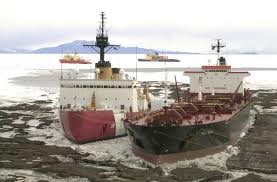 At this stage, I’d simply suggest that the DOD waste no resources and simply (and quickly) revise existing and newly-formulated Arctic policy to give it a less militarized tone. As I demonstrate below, there’s really no reason to change the basic fundamentals of the Arctic Strategy, and we can use pretty much the same verbiage to identify the Antarctic as…
At this stage, I’d simply suggest that the DOD waste no resources and simply (and quickly) revise existing and newly-formulated Arctic policy to give it a less militarized tone. As I demonstrate below, there’s really no reason to change the basic fundamentals of the Arctic Strategy, and we can use pretty much the same verbiage to identify the Antarctic as…
…a secure and stable region where U.S. national interests are safeguarded, the U.S. homeland is protected, and nations work cooperatively to address challenges. It also articulates two main supporting objectives: Ensure (resource protection)
security, support safety, and promote (scientific)defensecooperation, and prepare to respond to a wide range of challenges and contingencies—operating in conjunction with other nations when possible, and independently if necessary—in order to maintain stability in the region.
I made a few edits to accommodate the requirement for a de-militarized Antarctic, but you get the idea. No need to reinvent the wheel–just write it up, lob it out and start using it to drive interest throughout the wider U.S. Government (and beyond, frankly). It’d just be a PR stunt, yes, but…DOD does need a framework to drive a whole-of-government approach to better focus upon Falklands-like pre-positioning and jostling on the peripheries.
Without Antarctic policy, we’ll simply be caught unprepared as far-sighted countries maneuver for position. And, frankly, it would be good for the U.S. to have a national discussion about what the Antarctic “End State” might be.
And who knows? There might be more common ground between China and the United States than we expected. But without a goal in mind, we can’t start the process of trimming Chinese expectations of the Antarctic serving as their wide-open, resource-rich Manifest-Destiny-esque frontier.
Demand Resources:
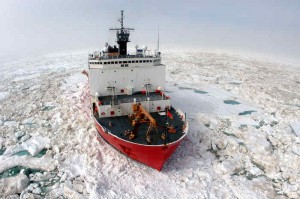 If the Antarctic is a priority, then America needs new Coast Guard Cutters and the National Science Foundation needs several Ice-Hardened ships, stronger logistics and a bigger budget.
If the Antarctic is a priority, then America needs new Coast Guard Cutters and the National Science Foundation needs several Ice-Hardened ships, stronger logistics and a bigger budget.
Two of America’s fleet of three large (and barely functional) ice-breaking cutters are approaching forty years of age, and require replacement. If we assume the replacement ships–should they even be built–are going to be operated by the USCG, they still should be built under USN guidance, and built with an innate ability to support the rapid “plug-in” of a range of military capabilities–in essence, we should build the next-generation heavy ice-breaker with the understanding that, at just about the end of their service life, they will likely be operating in a far more militarized region. That means reserving space and weight to bolt-on certain military capability should things in the 2040-timeframe start getting ugly in the Antarctic.
Other resources and requirements to start considering is a logistical and basing network to support operations in the Southern seas, along with acquisition/development of units and gear capable of operation in austere Polar environments.
We should also consider more sustained monitoring of the region and perform regular deep-dive assessments of research activity there.
Wargame It Out:
If we consider that “Domination and Exploitation of the Antarctic” has even the remotest chance of being a goal in China’s “Long Game” in their march towards global dominance, it might be wise to occasionally “Red Team” the region–step back and consider what steps that country might take on a global level to make domination of the Antarctic a reality.
Begin Asking Questions Now:
There are a few items that are worth urging wider international consideration and media scrutiny:
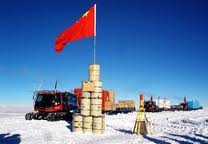 1. Continue to ask “What is China Doing?” As China’s base expansion continues apace, the international community must continue urging China to explain their long-range intentions. If China’s Antarctic-thrusting crowd has political traction, and looks at the South China Sea as more than just China’s “safe” route to the Middle East, but as China’s sole safe route to Antarctica, then that raises the stakes in the South China Sea region considerably.
1. Continue to ask “What is China Doing?” As China’s base expansion continues apace, the international community must continue urging China to explain their long-range intentions. If China’s Antarctic-thrusting crowd has political traction, and looks at the South China Sea as more than just China’s “safe” route to the Middle East, but as China’s sole safe route to Antarctica, then that raises the stakes in the South China Sea region considerably.
Given China’s current basing structure and evident interest in using Zhongshan Station as a major point of entry for other stations/bases (and the eventual basis for a territorial claim in areas particularly likely to be resource-rich?), building-in stronger future overwatch capability nearby and adding Antarctic bases/stations in the immediate region should be a priority for the U.S–along with America’s Indian and Australian allies.
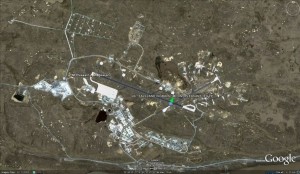 2. Start developing and discussing long-term options at the Antarctic gateways: It might be time to review long-term, collaborative basing options near the Antarctic Circle. The UK has a great base at the Falklands (pictured here), and Australia and New Zealand offer good alternatives too. Will Diego Garcia remain a useful option twenty years from now? And what happens if that base is not viable over the long-term? What if it is rented out by the Chinese instead? Will the Cocos Islands be available? Or will other islands further south?
2. Start developing and discussing long-term options at the Antarctic gateways: It might be time to review long-term, collaborative basing options near the Antarctic Circle. The UK has a great base at the Falklands (pictured here), and Australia and New Zealand offer good alternatives too. Will Diego Garcia remain a useful option twenty years from now? And what happens if that base is not viable over the long-term? What if it is rented out by the Chinese instead? Will the Cocos Islands be available? Or will other islands further south?
If we assume Zhongshan Station will be China’s entry point to the Antarctic, then France’s Southern and Antarctic Lands–islands that hover just north of China’s base–stand to become a very interesting strategic asset.
 3. Continue to monitor just what the Erik Princes of the world doing: With the Antarctic demilitarized, countries that are interested in side-stepping that pesky restriction will start employing non-military resources to project power. As we know, China is very adept at using her non-military fishing, commercial and “law enforcement” Coast Guard/Research fleets to project power offshore and in coastal regions.
3. Continue to monitor just what the Erik Princes of the world doing: With the Antarctic demilitarized, countries that are interested in side-stepping that pesky restriction will start employing non-military resources to project power. As we know, China is very adept at using her non-military fishing, commercial and “law enforcement” Coast Guard/Research fleets to project power offshore and in coastal regions.
Onshore is a different matter, and I would suggest that Erik Prince’s recently announced exploration of, essentially, a Chinese version of Blackwater, is the first step in China’s attempt to adapt their wildly successful “national fleet” concept into a force for use ashore. Development of a similarly militarized (yet rigorously non-military) set of ground forces has been done before, and been used in the past by far less savory regimes to assimilate areas under questionable sovereignty.
Conclusion:
The Antarctic is the last frontier for an increasingly crowded and resource-starved planet. Traditional barriers to exploitation that protected this unpopulated continent–remoteness, harsh conditions and immature technology–are crumbling just as the governing structure of the region seems to be hurdling into an unworkable irrelevance. Some countries are even eying the region as a viable frontier–a modern repeat of a well-deserved “Manifest Destiny”.
 It is high time for America–as the region’s undeniably good steward and manager–to spell out the goal-state for this pristine region, and get about making that vision a reality.
It is high time for America–as the region’s undeniably good steward and manager–to spell out the goal-state for this pristine region, and get about making that vision a reality.
The time to engage is now. If America continues a policy of passive disinterest, the South Pole will become little more than a militarized camp, a boom-town primed to explode–And at that point, when the Penguins and whales are truly in the crossfire, what options will we have beyond an indignant tweet or two and an overhasty, poorly thought out “Samantha Powers-esque” attempt at intervention? So, with that thought, I close by urging the U.S. Government to be smart and be proactive. Put the Antarctic back on America’s strategic map!
UPDATE: The day this post went live, the State Department announced that they were going to appoint an Arctic Ambassador. That’s great news, but I would–given that both regions are facing similar challenges–expand this person’s brief to allow the appointee to be a “Polar” Ambassador, helping to promote long-term solutions for both regions.

{ 6 comments… read them below or add one }
Hello, Admin.
Damned good site (I’ve just discovered) and that article of yours on the Antarctic Superstore (presently pending Sales!)
Having been to Falklands in the 1950’s (assisting diving team, Royal Navy in Stanley Harbour; sampling the sea bottom…) I heartily agree on the wake-up call you advertise.
Technology overcomes climate in the region. Shipping is moving apace…
God Forbid that the Antarctic should become another polluted Battleground of any sort.
Regards,
Tanzy Lee-Riley
Thanks for commenting Andrew, but I must tell you that climate change has little to do with this. The date to discuss the opening of the Antarctic to resource extraction/exploration is set, and that conversation will happen regardless of the state of the climate. Increased temperatures may make things easier for some things, and more ice may enable other things. It doesn’t matter–If the resources are valuable enough, they’ll be extracted regardless of temperature.
The other thing to mention is–if, as you seem to be claiming, ice is becoming increasingly significant, then, well, it kinda makes a stronger case for replacing those forty-year-old icebreakers, right? Right? Sigh. Anyway. Thanks for stopping by!
Just one tiny little problem with this appeal for more money for the Navy: Antarctic ice has been increasing for more than a decade, Arctic ice grew at the fastest pace on record last fall, and the global average temperature has been trending DOWN since 1998.
Thanks for the comments. It’s so frustrating that the United States has such a difficult time actively managing slow-developing, complex challenges…nominally, we look at the future in neat 4-8 year increments. With things lie the QDR, we might delicately peer 25 years or so into the future…But if we’re (say, in the Navy) are spending money to build assets that have 40-year lives, we simply must do a better job of looking into the strategic future to define requirements and so forth…but to do that right requires a far more concerted effort to sketch out longer-term priorities than we are accustomed to…
“One of the tests of leadership is the ability to recognize a problem before it becomes an emergency.”
Very interesting read. I agree to the point that all resources discovered, no matter where they are, will some day be extracted. Moreover, the point the Antarctic is the world’s “biggest geopolitical prize” is a very good one. However, we don’t know how many decades it will take for the Antarctic to become better accessable and before mankind pivots to the Arctic, the deep-sea and other resources on land will come first. Nevertheless, not only America, but rather the whole West should bring the Antarctic back on their radar.